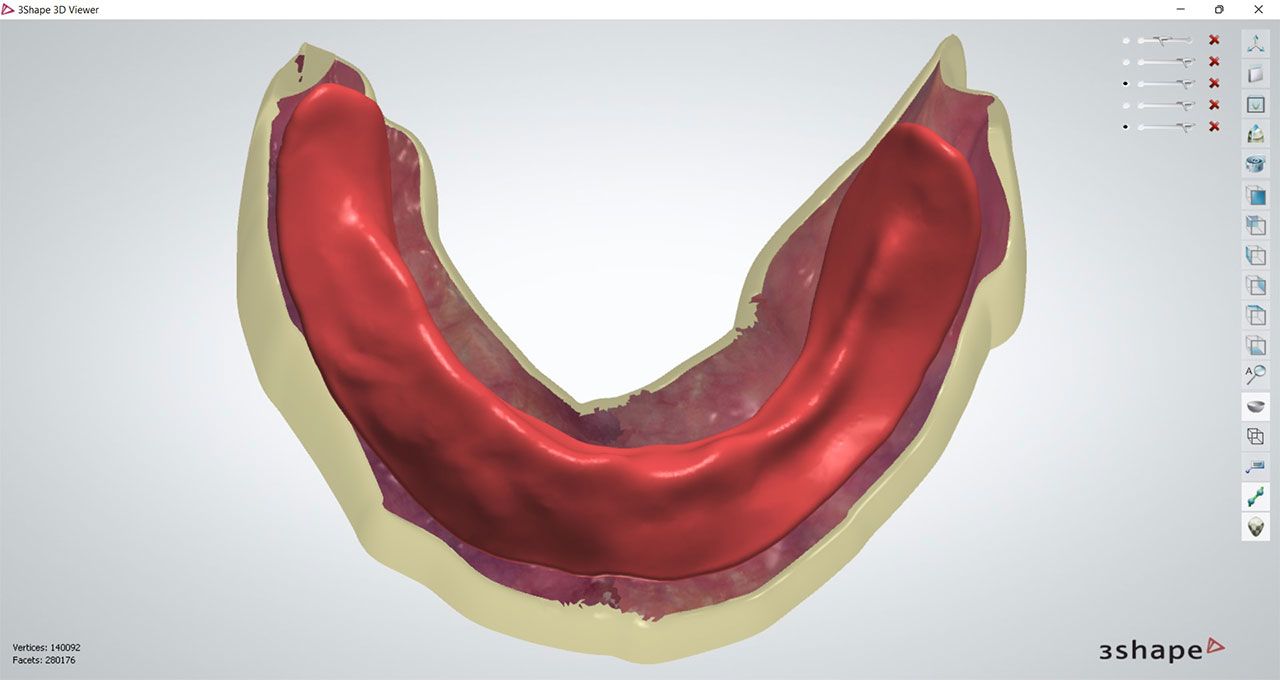A clinical study published November 3, 2023 in The Journal of Prosthetic Dentistry has found edentulous mandible intraoral scans to be as accurate as conventional elastomeric impressions. The study was conducted by Professor Doctor Lucio Lo Russo and team. A TRIOS 4 intraoral scanner along with his Lo Russo Retractors were used to perform the research.
The study examined the two-step IO scanning strategy for edentulous mandibular arches and measured the potential distortion of intraoral scans using the protocol versus conventional elastomeric impressions.
As a background, intraoral scanner manufacturers recommend the two-step strategy for scanning an edentulous mandible arch. The technique requires scanning one side first and then moving to the other side.
However, according to Lo Russo, it is still unclear if inconsistency in stitching could result in a loss of accuracy or distortion in the scans. The study looked to examine this.

Based on the findings of the clinical study, the following conclusions were drawn:
- "Intraoral scans of the edentulous mandibular arch made with a 2-step scanning strategy do not exhibit significant distortion in comparison with conventional elastomeric impressions.
- Adequate management of the stability of tissues around the residual ridge, favoring accessibility for the scanner, can yield reliable intraoral scans of the edentulous mandibular arch.”
The study was conducted by a single operator who scanned twenty mandibular edentulous arches using the two-step scan strategy. A polysulfide conventional impression was also obtained and immediately scanned using the same intraoral scanner.
The two (STL) files were superimposed with a surface-matching software program and compared. The study concluded that the intraoral scans of the edentulous mandibular arch showed no significant distortion in comparison with the conventional impression.
Interestingly, Lo Russo Retractors were used to displace and stabilize the soft tissue during scanning. Lo Russo’s retractors are quickly gaining popularity within the dental community.
The second conclusion made in the study affirmed their effectiveness, stating: “adequate management of the stability of tissues around the residual ridge, favoring accessibility for the scanner, can yield reliable intraoral scans.” Intraoral scanner users should take note.
Professor Doctor Lo Russo is a long-time advocate for edentulous scanning. Over the years, he has contributed insightful and popular papers and presentations for 3Shape.